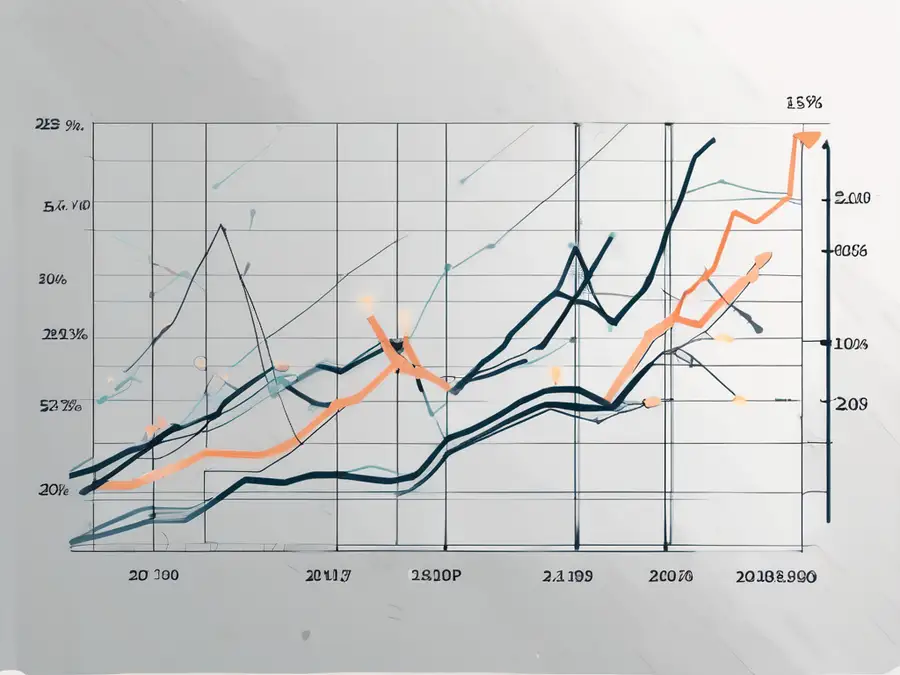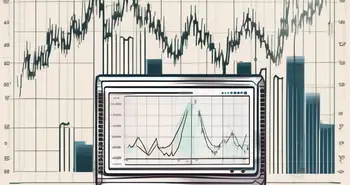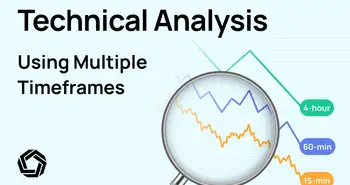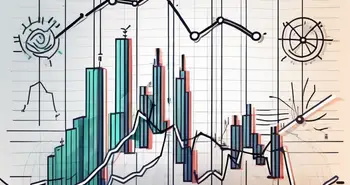Exploring the Significance of Pivot Points in Technical Analysis

As an experienced trader and technical analysis enthusiast, I have always been fascinated by the significance of pivot points in the world of financial markets. In this article, I will guide you through the intricacies of pivot points and how they play a crucial role in shaping trading strategies. So let's dive in and unravel the mysteries of this powerful tool!
Understanding Technical Analysis
Before delving into the specifics of pivot points, it is essential to have a solid understanding of technical analysis as a whole. Technical analysis is a methodology used by traders to predict future price movements based on historical market data. By analyzing charts, patterns, and indicators, traders aim to identify trends and make informed trading decisions. It is a vital tool in the arsenal of both novice and seasoned traders alike.
The Basics of Technical Analysis
At its core, technical analysis relies on the principle that historical price and volume data can provide insights into potential future market behavior. By examining charts, traders can identify patterns such as support and resistance levels, trendlines, and Fibonacci retracements. These patterns can help traders determine optimal entry and exit points for their trades, thus increasing their chances of success.
One crucial aspect of technical analysis is understanding the concept of indicators. Indicators are mathematical calculations applied to price and volume data, providing traders with additional information about market conditions. Popular indicators include moving averages, relative strength index (RSI), and stochastic oscillators. Each indicator offers unique insights into market trends and can be highly valuable in analyzing price action.
Key Concepts in Technical Analysis
Several key concepts underpin technical analysis and contribute to its effectiveness as a trading tool. These concepts include trend analysis, support and resistance levels, market psychology, and risk management.
Trend analysis involves identifying the direction of the market. Trends can be classified as bullish (upward), bearish (downward), or sideways. Traders often use trendlines and moving averages to visualize and confirm trends. By understanding the prevailing trend, traders can align their trades with the market momentum, increasing their chances of success.
Support and resistance levels are price levels at which the buying or selling pressure is significant enough to halt or reverse a trend. Support levels act as a floor preventing prices from falling further, while resistance levels act as a ceiling preventing prices from rising higher. Traders often use these levels to identify potential entry and exit points for their trades.
Understanding market psychology is crucial in technical analysis. Markets are driven by the collective emotions and actions of traders. By studying investor sentiment, market participants can gain insights into the underlying forces driving price movements. Fear, greed, and uncertainty all play a role in shaping market conditions and can be analyzed through various indicators and chart patterns. By understanding market psychology, traders can anticipate potential market reactions and adjust their trading strategies accordingly.
Risk management is another essential aspect of technical analysis. Traders must have a clear understanding of their risk tolerance and implement appropriate risk management strategies. This includes setting stop-loss orders to limit potential losses and using proper position sizing techniques to ensure that trades are within acceptable risk parameters.
In conclusion, technical analysis is a powerful tool that allows traders to analyze historical market data and make informed trading decisions. By understanding the basics of technical analysis, including chart patterns, indicators, trend analysis, support and resistance levels, market psychology, and risk management, traders can enhance their trading strategies and increase their chances of success.
The Role of Pivot Points in Technical Analysis
Now that we have laid the foundation of technical analysis, let's turn our attention to the pivotal role that pivot points play within this framework.
When it comes to analyzing market trends and making informed trading decisions, pivot points are an essential tool for traders. These horizontal lines are used to identify potential support and resistance levels in a market, providing valuable insights into price movements.
Defining Pivot Points
Pivot points are calculated using a mathematical formula based on the previous day's high, low, and close prices. The pivot point itself represents the average of these three prices, while the support and resistance levels are derived by applying specific formulas to the pivot point value.
By plotting these lines on a price chart, traders can quickly identify key levels where the market may experience a shift in momentum. These levels act as reference points, guiding traders in their decision-making process.
How Pivot Points Influence Market Trends
Pivot points act as a magnet for price movements, attracting prices towards them. When the market is trading above the pivot point, it is generally considered bullish, and traders focus on buying opportunities. They anticipate that the market will continue to move higher, riding the upward momentum.
Conversely, when the market is trading below the pivot point, it is generally considered bearish, and traders focus on selling opportunities. They expect the market to continue its downward trajectory, capitalizing on potential profit opportunities as prices decline.
However, pivot points offer more than just directional signals. They also serve as dynamic support and resistance levels. As market prices approach these levels, traders watch for potential price reversals, breakouts, or bounces.
For instance, if the market is in a downtrend and approaches a pivot point support level, traders may look for signs of a reversal. They analyze candlestick patterns, volume indicators, and other technical tools to gauge whether the market is likely to bounce back from the support level and start an upward move.
On the other hand, if the market is in an uptrend and approaches a pivot point resistance level, traders may watch for a breakout. A breakout occurs when the market surpasses a resistance level, indicating a potential continuation of the upward trend.
By incorporating pivot points into their analysis, traders gain a deeper understanding of market dynamics. These key levels help identify crucial turning points in the market, allowing traders to make informed decisions based on price action and market sentiment.
In conclusion, pivot points are a valuable tool in technical analysis. They provide traders with a framework to assess market trends, identify potential support and resistance levels, and make informed trading decisions. By understanding the role of pivot points, traders can enhance their analysis and increase their chances of success in the dynamic world of financial markets.
Calculating Pivot Points
Understanding how pivot points are calculated is essential for traders looking to incorporate them into their analysis.
Pivot points are a popular technical analysis tool used by traders to identify potential support and resistance levels in the market. These levels can help traders make informed decisions about when to enter or exit trades.
The most commonly used method for calculating pivot points is the Standard Pivot Point Formula. This formula calculates the pivot point (PP), support levels (S1, S2, and S3), and resistance levels (R1, R2, and R3) using the previous day's high, low, and close prices. The formulas are as follows:
Pivot Point (PP) = (High + Low + Close) / 3
Support 1 (S1) = (PP x 2) – High
Support 2 (S2) = PP – (High – Low)
Support 3 (S3) = Low – 2(High – PP)
Resistance 1 (R1) = (PP x 2) – Low
Resistance 2 (R2) = PP + (High – Low)
Resistance 3 (R3) = High + 2(PP – Low)
Interpreting Pivot Point Calculations
Once the pivot points and associated support and resistance levels are calculated, traders can interpret them to identify potential trading opportunities.
Price reactions around the pivot point can provide valuable insights. If prices break above the pivot point and continue to rise, it may signal a bullish market, and traders can consider long positions. Conversely, if prices break below the pivot point and continue to decline, it may indicate a bearish market, and traders can explore short opportunities.
Breakouts above or below the support and resistance levels can also signal significant price movements. When prices break above resistance levels, it indicates strength, and traders can look for potential buying opportunities. Conversely, when prices break below support levels, it suggests weakness, and traders can consider selling opportunities.
It's important to note that pivot points are not foolproof indicators and should be used in conjunction with other technical analysis tools and market conditions. Traders should also consider factors such as volume, trend lines, and market sentiment when making trading decisions.
Furthermore, pivot points can be calculated for different time frames, such as daily, weekly, or monthly. Each time frame may provide different levels of support and resistance, allowing traders to adapt their strategies accordingly.
In addition to the Standard Pivot Point Formula, there are other variations of pivot point calculations, such as Fibonacci Pivot Points and Camarilla Pivot Points. These alternative methods may appeal to different traders and offer additional insights into market dynamics.
Overall, understanding how to calculate and interpret pivot points can be a valuable tool for traders seeking to enhance their technical analysis skills and make more informed trading decisions.
The Significance of Pivot Points in Trading Strategies
Pivot points are a fundamental component of many trading strategies, particularly in day trading and swing trading.
Trading in the financial markets is a complex endeavor that requires careful analysis and decision-making. Traders employ various tools and techniques to gain an edge and increase their chances of success. One such tool that has gained significant popularity is pivot points.
Pivot Points in Day Trading
In day trading, pivot points act as key reference levels, helping traders identify intraday price movements. Day traders focus on short-term price volatility and seek to profit from rapid price fluctuations. Pivot points enable them to determine potential entry and exit points, as well as define stop-loss and take-profit levels.
Imagine a day trader sitting in front of multiple screens, closely monitoring price charts and indicators. The trader's goal is to identify short-term opportunities and capitalize on them. Pivot points play a crucial role in this process.
By calculating pivot points based on the previous day's high, low, and closing prices, day traders can identify levels where the market is likely to reverse or continue its current trend. These levels act as magnets, attracting price action and providing valuable insights into market sentiment.
Day traders often incorporate additional technical indicators and chart patterns to confirm their trading decisions. By combining pivot points with other tools, day traders can increase the accuracy of their trading strategies and minimize risk.
Pivot Points in Swing Trading
In swing trading, which involves holding positions for several days to weeks, pivot points serve as valuable guidance for identifying potential reversals and continuation patterns. Swing traders aim to capture larger price moves within the prevailing trend.
Swing trading requires a different approach compared to day trading. Instead of focusing on short-term price fluctuations, swing traders analyze the broader market context and look for opportunities that align with the prevailing trend. Pivot points play a crucial role in this analysis.
When analyzing swing trading opportunities, traders pay close attention to significant pivot points, as they often coincide with key support and resistance levels. These levels act as barriers that can either halt price movements or propel them further. Trading decisions are then made based on these critical levels and confirmed by other technical indicators or chart patterns.
By aligning their trades with pivot point analysis, swing traders can enhance their profitability. They can enter positions at optimal levels and ride the price wave as it unfolds. Pivot points provide swing traders with a clear roadmap, helping them navigate through the market's twists and turns.
In conclusion, pivot points are a powerful tool that traders use to enhance their trading strategies. Whether in day trading or swing trading, pivot points provide valuable insights into market dynamics and help traders make informed decisions. By incorporating pivot points into their analysis, traders can increase their chances of success and navigate the financial markets with confidence.
Risks and Limitations of Using Pivot Points
While pivot points are a powerful tool, it is important to acknowledge their limitations and associated risks.
Potential Drawbacks of Pivot Points
One potential drawback of using pivot points is their widespread popularity. As more traders focus on these levels, they can become self-fulfilling prophecies, leading to crowded trades and increased volatility around pivot points. Therefore, it is crucial not to solely rely on pivot points but to complement their analysis with other technical tools.
Another drawback is that pivot points are based on historical data and do not account for current fundamental or macroeconomic events. Sudden news or economic announcements can override the predictive power of pivot points and result in unexpected price movements. Traders need to stay abreast of market developments and adapt their strategies accordingly.
Mitigating Risks Associated with Pivot Points
To mitigate the risks associated with pivot points, it is crucial to pair them with sound risk management techniques. Implementing appropriate stop-loss and take-profit levels can help limit losses and protect profits. Additionally, traders should consider incorporating other technical analysis tools, such as trendlines, oscillators, or volume indicators, to confirm potential trading opportunities and reduce reliance solely on pivot points.
Future of Pivot Points in Technical Analysis
As financial markets continue to evolve, so does the role of pivot points in technical analysis.
Technological Advancements and Pivot Points
With the advancements in computing power and trading platforms, calculating pivot points has become more accessible and automated. Traders can now rely on real-time data and sophisticated algorithms to generate pivot point levels instantly. This enables traders to react quickly to changing market conditions and make swift, informed trading decisions.
The Evolving Role of Pivot Points in Market Analysis
While pivot points have stood the test of time, they continue to evolve as traders explore new ways to enhance their effectiveness. Traders are developing innovative strategies by combining pivot points with machine learning, artificial intelligence, and algorithmic trading. These advancements aim to improve the accuracy and precision of using pivot points, adding a new dimension to technical analysis.
In conclusion, pivot points play a significant role in technical analysis, acting as key reference levels for traders. Understanding the basics, calculating pivot points, and interpreting their implications can provide traders with a deeper understanding of market dynamics and guide their trading decisions. However, it is essential to acknowledge the limitations of pivot points and combine them with other technical tools and risk management strategies. By staying adaptable and continuously refining their trading approach, traders can leverage the power of pivot points to enhance their overall profitability.
FAQ
What is technical analysis?
Technical analysis is a methodology used by traders to predict future price movements based on historical market data. It involves analyzing charts, patterns, and indicators to identify trends and make informed trading decisions.
How are pivot points calculated?
Pivot points are calculated using a mathematical formula based on the previous day's high, low, and close prices. The formula involves deriving the pivot point value and support and resistance levels through specific calculations.
What role do pivot points play in trading strategies?
Pivot points are a fundamental component of many trading strategies, particularly in day trading and swing trading. They serve as reference levels for identifying potential entry and exit points, as well as defining stop-loss and take-profit levels.
What are the risks associated with using pivot points?
One risk of using pivot points is their widespread popularity, potentially leading to crowded trades and increased volatility around these levels. Additionally, pivot points are based on historical data and may not account for current fundamental or macroeconomic events.
How can I mitigate risks associated with pivot points?
To mitigate risks, it is crucial to pair pivot points with sound risk management techniques. Implement appropriate stop-loss and take-profit levels and consider incorporating other technical analysis tools to confirm potential trading opportunities.
What does the future hold for pivot points in technical analysis?
Pivot points continue to evolve alongside technological advancements in trading platforms. Traders are exploring innovative strategies by combining pivot points with machine learning, artificial intelligence, and algorithmic trading to enhance their effectiveness.
Remember, whether you are a beginner or an experienced trader, mastering pivot points takes time and practice. Like any tool, they are most effective when used in conjunction with thorough analysis and sound decision-making. As you progress on your trading journey, continue to sharpen your technical analysis skills and adapt to changing market conditions. Happy trading!
Ready to elevate your trading game with the insights of pivot points and the cutting-edge technology of blockchain? Look no further than Morpher, the revolutionary trading platform that's redefining the investing landscape. With Morpher, you can seamlessly integrate the power of pivot points into a trading experience that offers zero fees, infinite liquidity, and the flexibility of fractional investing. Embrace the future of trading with the safety and control of the Morpher Wallet, and take advantage of up to 10x leverage to maximize your strategies. Don't miss out on the opportunity to transform your trading journey. Sign Up and Get Your Free Sign Up Bonus today, and join the community of traders who are already experiencing the Morpher difference!

Disclaimer: All investments involve risk, and the past performance of a security, industry, sector, market, financial product, trading strategy, or individual’s trading does not guarantee future results or returns. Investors are fully responsible for any investment decisions they make. Such decisions should be based solely on an evaluation of their financial circumstances, investment objectives, risk tolerance, and liquidity needs. This post does not constitute investment advice.

Painless trading for everyone
Hundreds of markets all in one place - Apple, Bitcoin, Gold, Watches, NFTs, Sneakers and so much more.

Painless trading for everyone
Hundreds of markets all in one place - Apple, Bitcoin, Gold, Watches, NFTs, Sneakers and so much more.








